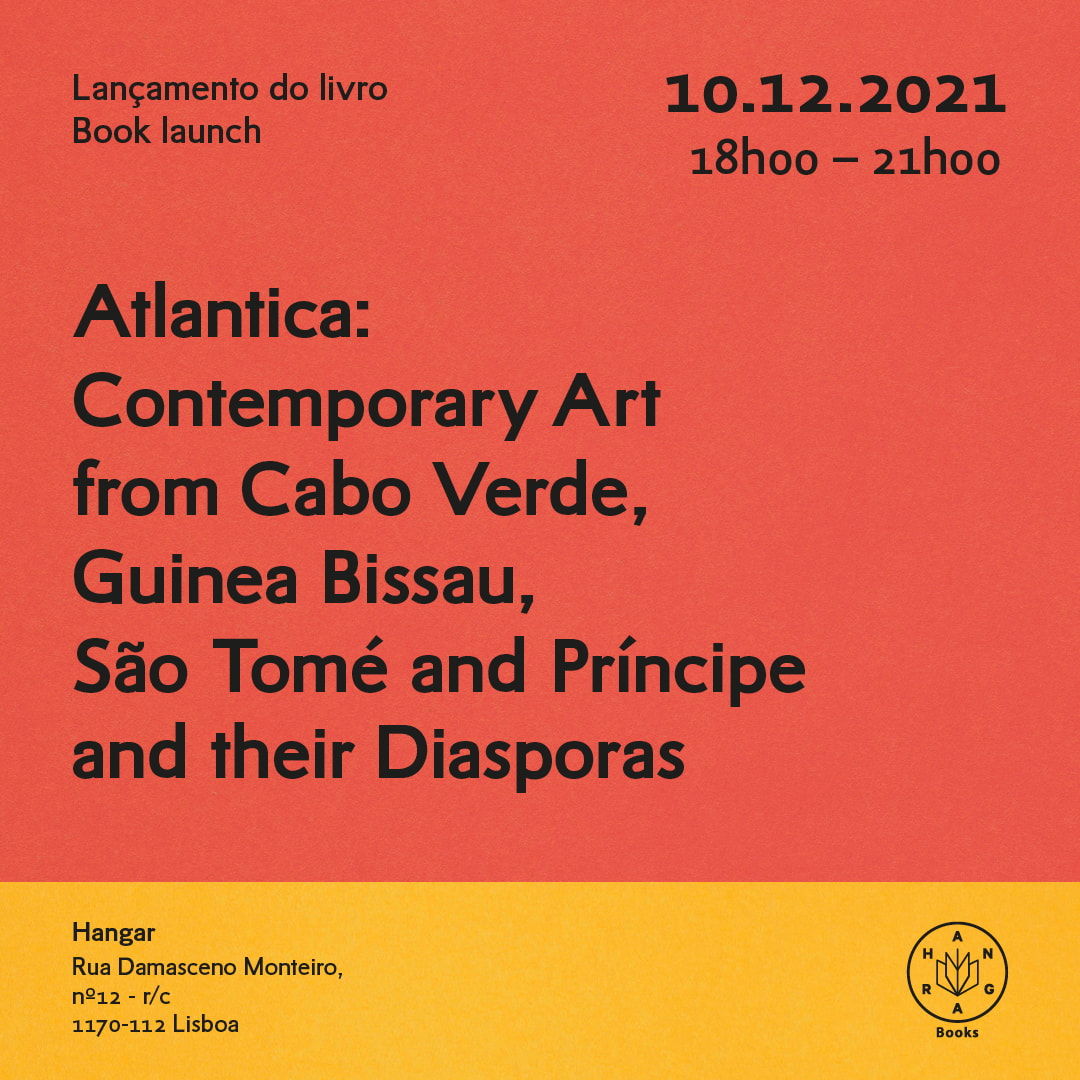Date: December 10th, 2021
Time: 6pm – 9pm
Programme:
18h00
César Schofield Cardoso
The space we share Editor’s note
18h30
Ana Balona de Oliveira
Contemporary Art and the interwoven histories of Cabo Verde, Guinea Bissau and São Tomé and Príncipe
19h00
Inocência Mata
Between Sankofa and Janus… the labor of “transterritorialised” artists
19h30
Joacine Katar Moreira
TO DECOLONISE IS TO D.E.P.R.O.G.R.A.M.M.E. Systemic racism, body, gender and diaspora in the arts
20h00
Artists talk
Vanessa Fernandes, Irineu Destourelles, Nú Barreto, Melissa Rodrigues, René Tavares

ATLANTICA: Contemporary Art from Cabo Verde, Guinea Bissau, São Tomé and Príncipe and their Diasporas
The third book by Hangar Books, specialising in publications in the context of contemporary arts, has a particular focus on epistemologies of the south.
Following on from the two previous works, dedicated respectively to Angola and Mozambique, this new book from the series “Atlantica” focuses on art from Cabo Verde, Guinea-Bissau, and São Tomé and Príncipe, as well as their diasporas. Edited by the artist César Schofield Cardoso, together with Mónica de Miranda, who was also responsible for the coordination of the book.
Among the selected artists, we have: Olavo Amado, Nú Barreto, Welket Bungué, César Schofield, Irineu Destourelles, Vanessa Fernandes, Ângelo Lopes, Sandim Mendes, Melissa Rodrigues, Herberto Smith, Abdel Queta Tavares, and René Tavares. For the theoretical essays we have: Azu Nwagbogu, Mónica de Miranda, César Schofield Cardoso, Ana Balona de Oliveira, Ana Cristina Pereira, Inês Beleza Barreiros, Raquel Schefer, Ana Nolasco, Álvaro Luís Lima, Michelle Salles, Paula Nascimento, Mariana Aboim, Raquel Lima, Valdívia Delgado Tolentino, Cristiana Tejo, Luísa Santos, Inocência Mata, and Joacine Katar Moreira.
This curatorial framework highlights contemporary artists within and across regions who have operated from the turn of the century to the present. They are artists involved in experimental and conceptual art research and practices that investigate colonial and post-colonial narratives. The works of the artists represented in this book are diverse in medium and approach, as well as in addressing social issues such as identity and bodily politics, place, memory, and history. The new millennium witnessed an unprecedented cultural production, characterized by a mixture of radicalism and marginality, nostalgia and utopia. These artists are primarily committed to challenging fixed notions of place and asserting connections between artistic production and political, social, ideological and personal formations.
“Atlantica” is the title and organizing principle of this series and its semantics date back to classical mythology. It is loaded with interpretive potential on issues of location, geography, exile, migration, separation, exodus, diaspora, and displacement, and represents the movement to leave the homeland, a common experience for many of the artists represented in the other books of the series. Atlantica also points to the well-studied history of the crossing of the South and North Atlantic and refers to the concept of The Black Atlantic (1993), by Paul Gilroy. Gilroy uses Atlantic images to demonstrate the position of identities between two (or more) lands, cultures, which cannot be defined by borders. Atlantica is situated in this place of double conscience in the work of W.E.B. Du Bois, in The Souls of Black Folk (Du Bois 1903, 8).
